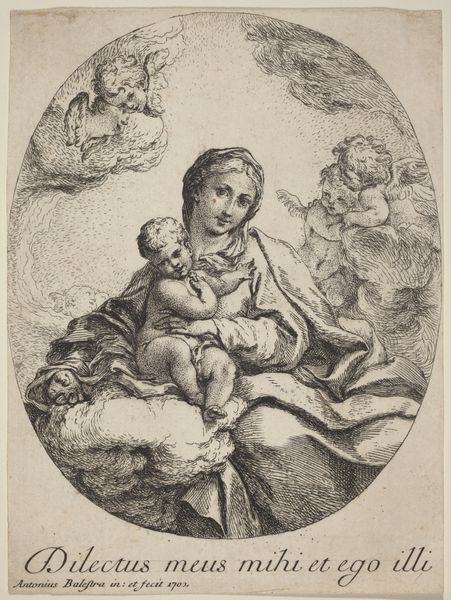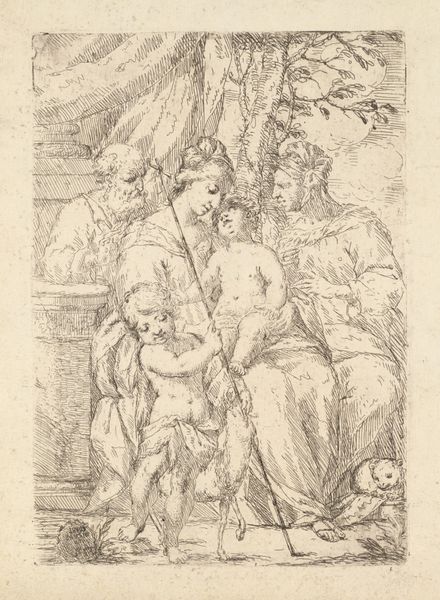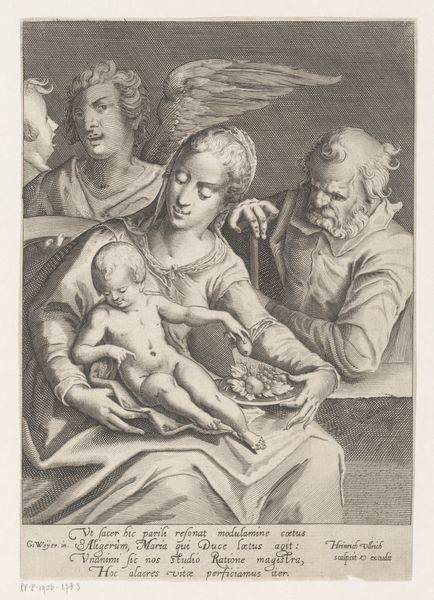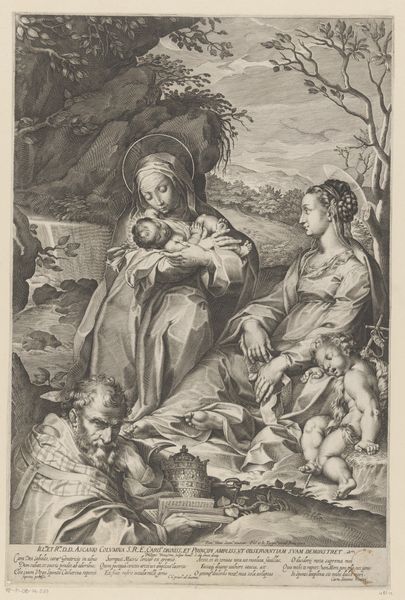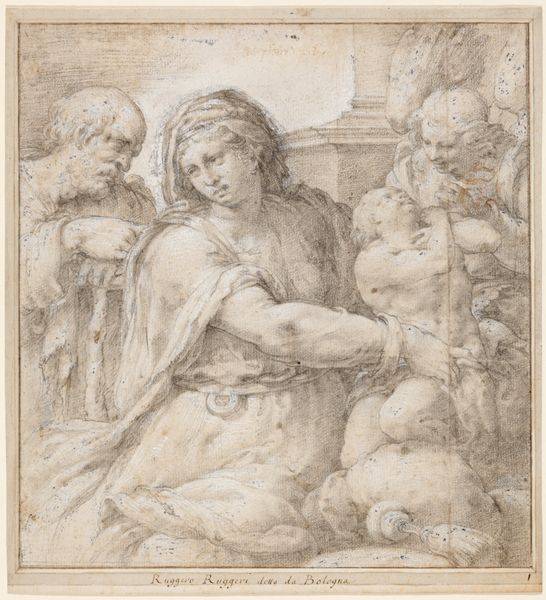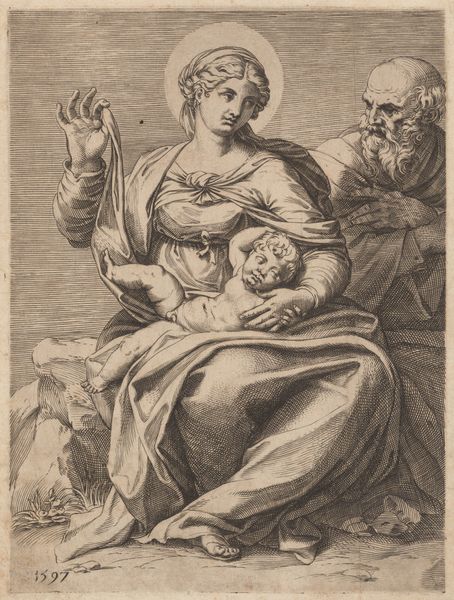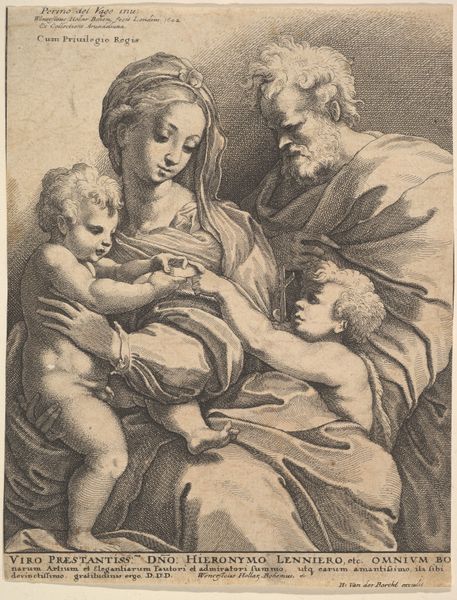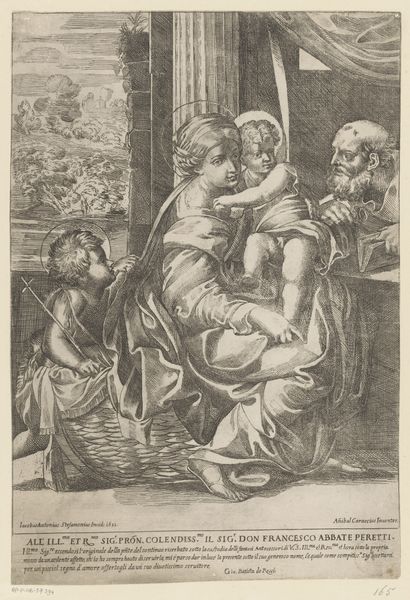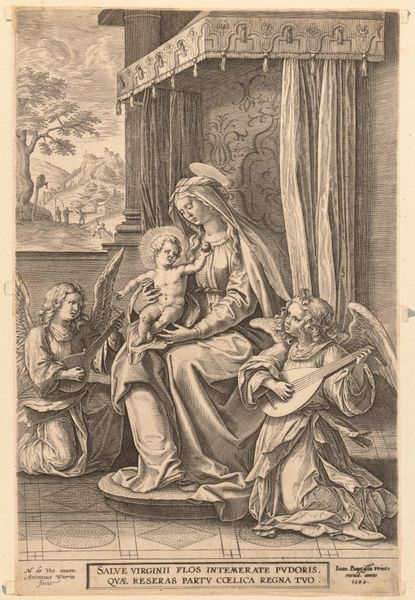
print, etching
#
portrait
#
baroque
# print
#
etching
#
figuration
#
history-painting
Dimensions: 166 mm (height) x 141 mm (width) (plademaal)
Curator: We're looking at Elisabetta Sirani's "The Holy Family," an etching dating back to 1659. It's held here at the SMK, the National Gallery of Denmark. Editor: It strikes me immediately as remarkably delicate for such a profound subject. The linework is so intricate and fine; it’s almost like a whispered scene. Curator: Sirani, as a woman artist in 17th-century Bologna, carved out a significant role. This print exemplifies the rising popularity of the Baroque style during her time, and was surely made to be shared broadly, a far more democratic presentation of an otherwise privileged subject, typical of history paintings. Editor: Yes, it seems she has really mastered the oval frame of this etching to create such depth. The soft modeling of the figures, the subtle contrast between the foreground and background... it really enhances the central theme of the mother and child relationship. Curator: Precisely, and in her presentation of this Holy Family we see less of the divine hierarchy and more the simple intimacy between mother, father, and child; this humanized approach spoke to many in her time. Her workshop was renowned; this print would have contributed to her fame. Editor: Notice how the drapery, etched with such fine lines, draws the eye, almost directing the devotional gaze. The semiotics here reinforce a reading of sanctity and love. The formal interplay and subtle tonal gradations create a meditative effect. Curator: It's fascinating to see how she, and others like her, used the accessible medium of printmaking to bring grand narratives to a wider audience. This really cemented her role in the artistic landscape of the period, enabling her to become successful in a profession dominated by men. Editor: Thinking about it, what is truly powerful here, technically speaking, is the layering; such a fine level of etching provides the eye with many intricate spaces for interpretation and exploration of familial and divine connection. Curator: It has certainly given me a fresh perspective on Sirani and the role prints played in Baroque artistry and cultural history. Editor: For me, too. This print has prompted an appreciation for both the technique of etching, and its ability to elicit great emotion from relatively simple formal composition.
Comments
No comments
Be the first to comment and join the conversation on the ultimate creative platform.
